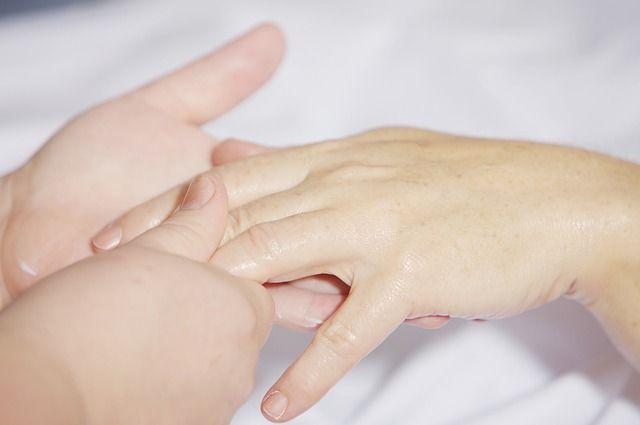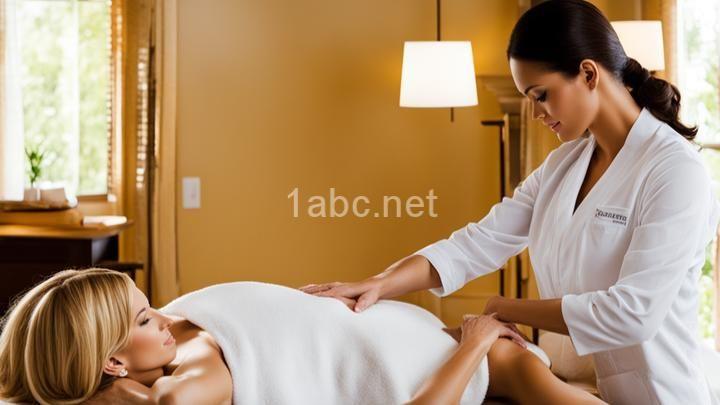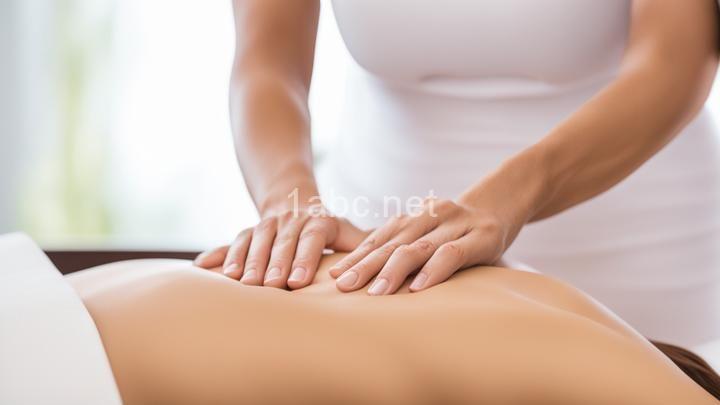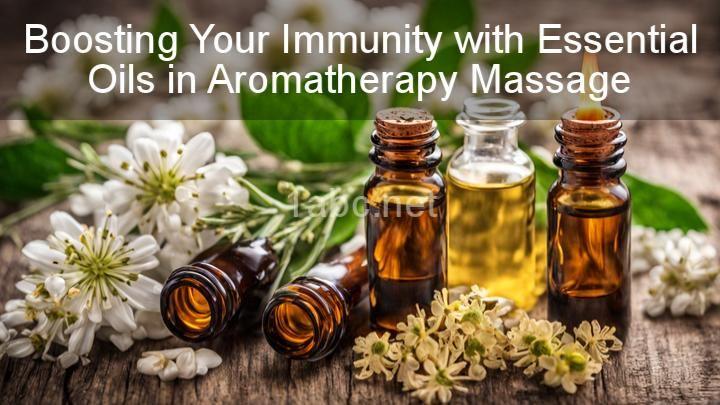The Role of Sports Massage in Enhancing Athletic Performance and Recovery

Introduction:
Welcome to our blog post on the important topic of sports massage and its impact on athletic performance and recovery. Whether you're a professional athlete or a fitness enthusiast, understanding the role of sports massage can be valuable for optimizing your training routine. In this article, we will explore the benefits of sports massage, how it can enhance your performance, and aid in post-workout recovery.
I. What is Sports Massage?
Sports massage is a specialized form of manual therapy that focuses on treating soft tissues to improve athletic performance and aid in recovery. It involves various techniques such as deep tissue massage, trigger point therapy, stretching, and myofascial release. The primary goal of sports massage is to enhance flexibility, reduce muscle tension, improve circulation, and alleviate pain.
II. Benefits of Sports Massage:
A. Enhanced Athletic Performance:
One of the key benefits of sports massage is its ability to enhance athletic performance. Regular sports massage sessions can help increase range of motion and joint flexibility, allowing for a wider range of movement during physical activities. Improved muscle strength and power output are also observed, leading to enhanced performance in sports and fitness activities. Additionally, sports massage has shown to improve proprioception, which is the body's ability to sense movement and position. Better proprioception leads to improved coordination and control over body movements.
B. Injury Prevention:
Another significant benefit of sports massage is its role in injury prevention. By reducing muscle tension and improving muscle balance and alignment, sports massage helps to prevent muscle strains and tears. Overuse injuries are also minimized as sports massage aids in maintaining muscle flexibility and preventing imbalances that can lead to injury. Furthermore, regular sports massage sessions can help prevent the formation of adhesions or scar tissue, which can restrict movement and contribute to pain and dysfunction.
C. Post-Workout Recovery:
Sports massage plays a crucial role in post-workout recovery. It helps accelerate the removal of metabolic waste products, such as lactic acid, from the muscles. This leads to decreased muscle soreness and fatigue, allowing for faster recovery and readiness for subsequent training sessions or competitions. Sports massage also improves circulation, facilitating the delivery of oxygen and nutrients to the muscles, which aids in their repair and recovery.
III. When to Incorporate Sports Massage into Your Routine:
To fully reap the benefits of sports massage, it is important to incorporate it into your training routine at the appropriate times.
A. Pre-event or Pre-workout:
Prior to an activity or event, sports massage should be performed 30 minutes to 2 hours beforehand. This pre-event massage focuses on warming up the muscles, increasing blood flow, and preparing the body for optimal performance. It can help improve muscle flexibility, enhance circulation, and mentally prepare the athlete for the upcoming physical demands.
B. Inter-event or Maintenance:
Regular sports massage sessions throughout training cycles are essential to maintain optimal muscle condition. These inter-event or maintenance massages help prevent injuries by addressing muscle imbalances, maintaining flexibility, and promoting overall muscle health. They can be scheduled at regular intervals based on the individual's training needs and goals.
C. Post-event or Post-workout:
Within 30 minutes to 2 hours after an activity or workout, a post-event sports massage can aid in recovery, reduce muscle soreness, and promote relaxation. This type of massage helps to flush out metabolic waste products, decrease muscle tension, and promote the body's natural healing processes. It is an important component of the recovery process, allowing the athlete to bounce back quicker and prepare for future training or competition.
IV. How to Choose a Qualified Sports Massage Therapist:
When seeking a sports massage therapist, it is crucial to choose someone who is qualified and experienced in providing sports-specific massages. Here are some tips to help you find the right therapist:
-
Look for certifications and qualifications specific to sports massage: A qualified sports massage therapist should have completed specialized training in sports massage techniques and possess relevant certifications.
-
Seek recommendations from trusted sources: Ask for recommendations from coaches, trainers, or fellow athletes who have had positive experiences with sports massage therapists. Personal referrals can provide valuable insights into the therapist's expertise and effectiveness.
-
Consider the therapist's experience working with athletes in your specific sport or activity: Every sport or physical activity has unique demands on the body. It may be beneficial to choose a therapist who has experience working with athletes in your specific sport or activity. They will have a better understanding of the specific muscle groups involved and the potential injuries associated with your sport.
Conclusion:
Sports massage plays a crucial role in enhancing athletic performance and facilitating recovery. By incorporating regular sports massage sessions into your training routine, you can optimize your physical abilities and minimize the risk of injuries. Remember to consult with a qualified sports massage therapist who understands your unique needs as an athlete. We hope this article has shed light on the significance of sports massage in maximizing your athletic potential. Stay tuned for more informative content on our blog!
[Disclaimer: This blog post is for informational purposes only. It is not intended to replace professional medical advice. Please consult with a healthcare provider before starting any new treatment or exercise regimen.]
FREQUENTLY ASKED QUESTIONS
How does sports massage enhance athletic performance?
Sports massage is a technique that can greatly enhance athletic performance. It works by targeting specific muscle groups and using various massage techniques to improve flexibility, increase blood flow, reduce muscle tension, and promote overall relaxation.One way sports massage enhances athletic performance is by improving flexibility. Tight muscles can restrict movement and decrease range of motion, which can hinder performance and increase the risk of injury. By applying deep tissue massage and stretching techniques, sports massage helps to loosen tight muscles, increase flexibility, and improve joint mobility. This allows athletes to move more freely and perform their movements with greater ease and efficiency.
Another benefit of sports massage is its ability to increase blood flow. During intense physical activity, muscles require an increased supply of oxygen and nutrients. Sports massage helps to stimulate blood circulation, which delivers vital nutrients and oxygen to the muscles, aiding in their recovery and promoting optimal performance. Additionally, improved blood flow helps to flush out metabolic waste products, such as lactic acid, which can accumulate during exercise and contribute to muscle fatigue.
Reducing muscle tension is another way sports massage enhances athletic performance. Intense training and repetitive movements can lead to muscle tightness and knots, which can impair muscle function and increase the risk of injury. Sports massage targets these areas of tension and uses techniques such as deep tissue massage, trigger point therapy, and myofascial release to release muscle knots and alleviate tension. This not only improves muscle function but also helps to prevent muscle imbalances and reduce the risk of overuse injuries.
Lastly, sports massage promotes overall relaxation and stress reduction. Intense physical activity can place a significant amount of stress on the body, both physically and mentally. Sports massage helps to reduce stress hormones such as cortisol and promotes the release of endorphins, which are natural painkillers and mood enhancers. This can help athletes feel more relaxed, focused, and mentally prepared for their athletic endeavors.
In summary, sports massage enhances athletic performance by improving flexibility, increasing blood flow, reducing muscle tension, and promoting relaxation. It is a valuable tool for athletes to optimize their physical performance, prevent injuries, and support their overall well-being.
Can sports massage help in injury prevention?
Yes, sports massage can indeed help in injury prevention. Sports massage is a targeted form of massage therapy that focuses on the specific needs of athletes and active individuals. It involves the manipulation of soft tissues, such as muscles, tendons, and ligaments, to improve flexibility, reduce muscle tension, and enhance overall performance.One of the key benefits of sports massage in injury prevention is its ability to increase blood circulation to the muscles. This helps in delivering oxygen and nutrients to the tissues, which aids in their recovery and reduces the risk of strain or sprain. Additionally, sports massage helps in eliminating waste products, such as lactic acid, that can accumulate in the muscles during intense physical activity.
Sports massage also plays a vital role in maintaining muscle balance and preventing imbalances that can lead to injuries. By addressing tight or overused muscles, sports massage helps in restoring proper alignment and function, reducing the chances of developing muscle imbalances that can lead to strains or tears.
Furthermore, sports massage can help in identifying areas of tension or tightness in the muscles before they become problematic. By detecting and addressing these issues early on, athletes can take proactive measures to prevent injuries and optimize their performance.
It is important to note that sports massage should be performed by a qualified and experienced massage therapist who understands the specific needs and requirements of athletes. They will be able to tailor the massage techniques to target problem areas and provide the most effective injury prevention benefits.
In conclusion, sports massage can be a valuable tool in injury prevention for athletes and active individuals. By improving circulation, maintaining muscle balance, and identifying potential problem areas, sports massage can help in reducing the risk of injuries and enhancing overall performance.
When is the best time to get a sports massage?
The best time to get a sports massage depends on your specific needs and goals. Generally, it is recommended to schedule a sports massage before a sporting event or intense training session. This can help prepare your muscles and improve performance by increasing blood flow and flexibility.Another optimal time for a sports massage is after a workout or competition. This can aid in the recovery process by reducing muscle soreness, improving circulation, and promoting relaxation. It can also help prevent post-exercise stiffness and tightness.
In addition, if you're experiencing any specific issues or injuries, a sports massage can be beneficial during your rehabilitation process. It can help alleviate pain, reduce inflammation, and promote healing in targeted areas.
Ultimately, the best time to get a sports massage is when it aligns with your training schedule and individual needs. It's important to communicate your goals and concerns with a qualified sports massage therapist, who can tailor the session to meet your specific requirements. Remember to listen to your body and seek professional advice if you're unsure about the timing or frequency of your sports massage sessions.
How often should athletes get sports massages?
Athletes can benefit from sports massages on a regular basis, but the frequency may vary depending on individual needs and training schedules. Generally, it is recommended for athletes to receive sports massages once or twice a week during intense training periods. This can help with muscle recovery, injury prevention, and overall performance enhancement.However, it's important to listen to your body and consult with a qualified sports massage therapist to determine the optimal frequency for you. Factors such as the intensity of your training, the type of sport you participate in, and any existing injuries or conditions should be taken into consideration.
If you're experiencing muscle soreness, fatigue, or tension, a sports massage can be beneficial in relieving these symptoms. Additionally, regular massages can help improve flexibility, range of motion, and circulation.
Remember, sports massages are not just for elite athletes. Recreational athletes and fitness enthusiasts can also benefit from incorporating sports massages into their routine. It's all about finding the balance that works best for you and supporting your body's needs. So, consider scheduling regular sports massages to optimize your athletic performance and overall well-being.




